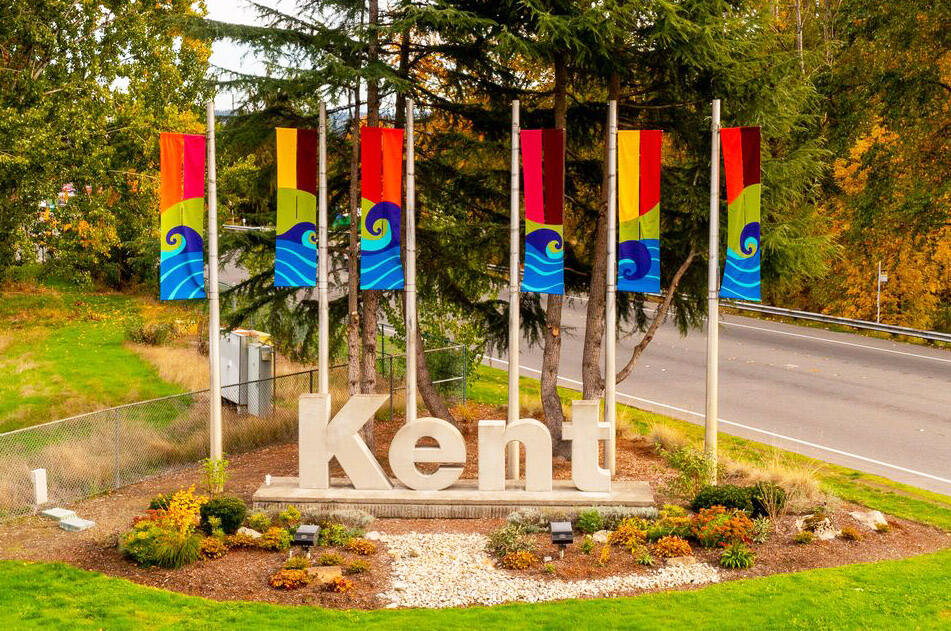The Kent City Council approved increases in the city’s business and occupation (B&O) tax to help pay for four new police department positions and kick in a little extra for the general fund balance.
Mayor Dana Ralph proposed the tax hike to pay for police positions as part of her 2025-2026 biennium budget proposal in September to the council. After several budget workshops, the council voted unanimously at its Nov. 19 meeting to approve the B&O ordinance to boost taxes. The council will vote Dec. 10 on the actual budget.
The extra revenue will pay for two sergeants and one officer for patrol and one corrections sergeant for the city jail.
Starting in 2025, the gross receipts manufacturing rate will go up from 0.001% to 0.00125% to bring in about $845,000 more per year. An adjustment to the gross receipts maximum cap will bring in an estimated $300,000 for a total of $1.14 million per year, according to city documents.
Ralph proposed raising the gross receipts maximum cap from $20 million to $25 million to bring in another $86,800 per year. But after council discussion favoring the increase, city Finance staff proposed a few other options, including to keep the cap at $20 million for most businesses but add an upper threshold of $100 million so that companies with gross receipts of $100 million or more will pay taxes on all of that amount.
Council members liked that option and voted to approve it, which will bring in about $300,000 per year. The $100 million threshold targets national retailers. Four businesses had more than $100 million in taxable retailing gross receipts in 2003, according to a Nov. 22 email from City Finance Director Paula Painter.
Council members liked the idea of higher taxes for national retailers but keeping rates the same for local businesses with a $20 million cap rather than $25 million.
“I don’t want anymore impact to them,” Councilmember Bill Boyce said at a workshop about keeping the cap lower. “We are talking about the national chains not paying their portion.”
Painter said because of confidentiality rules she couldn’t reveal the impact on specific companies, but she came up with examples for the council of tax impacts without naming businesses.
Any national or local retailer with less than $100 million in gross receipts but hitting the $20 million cap will pay about $20,000 per year in taxes, Painter said. A retailer at $100 million will pay about $100,000 per year, much higher than the current rate of $20,000 per year.
“We have small businesses paying their share all along,” Councilmember Toni Troutner said at a workshop. “We are looking at an option (to further tax) big retailers. …greedy is not the right word, but I feel like we are taking up money left out there.”
Ralph said at a workshop that she took a more conservative approach initially with her proposal until receiving council feedback.
“Large corporations are not paying their share,” Ralph said. “They are nationwide, so it will not have a huge impact. People should pay their fair amount of taxes.”
With an estimated $214,000 extra revenue under the new plan, Councilmember Zandria Michaud talked about using the money to hire another police officer.
But other council members didn’t support that idea. They preferred putting the extra revenue in the general fund balance, as budgets could be tighter in the future.
“We all understand the need for more officers but we also have unknowns in the future,” Council President Satwinder Kaur said.
B&O tax numbers
In addition to the gross receipts rate change and retailing gross receipts maximum change, the B&O tax will bring in an additional $3 million in new revenue to the general fund in 2025 because of a scheduled jump in the square footage tax approved by the council in 2018.
The B&O tax will bring in an estimated $24.4 million in 2025 and 2026, up about $4.7 million from 2024, according to city budget documents.
A total of 2,829 city businesses file and pay B&O taxes, according to Painter, the finance director. That includes businesses that pay taxes in any of the categories of gross receipts and square footage. A total of 1,564 of those businesses file quarterly and 1,265 file annually.
As far as how many businesses pay on square footage rather than gross receipts, the number depends and varies quarter by quarter and/or year by year, Painter said. In 2023, 555 businesses paid square footage tax. Of that total, 454 paid square footage tax for the entire year, and 101 paid square footage tax for some of the quarters. Businesses pay the larger of gross receipts tax or square footage tax for each filing period.
A total of 1,758 businesses do not have to file B&O tax reports because they have gross receipts under $250,000 per calendar year and no square footage tax due, Painter said.
Businesses that exceed $250,000 taxable gross receipts in a calendar year pay B&O tax on taxable gross receipts amounts over the $250,000 threshold (but under the $20 million cap), Painter said. The taxable gross receipts are calculated by subtracting from the total gross receipts things like liquor sales and sales outside of Kent.
Talk to us
Please share your story tips by emailing editor@kentreporter.com.
To share your opinion for publication, submit a letter through our website https://www.kentreporter.com/submit-letter/. Include your name, address and daytime phone number. (We’ll only publish your name and hometown.) Please keep letters to 300 words or less.

